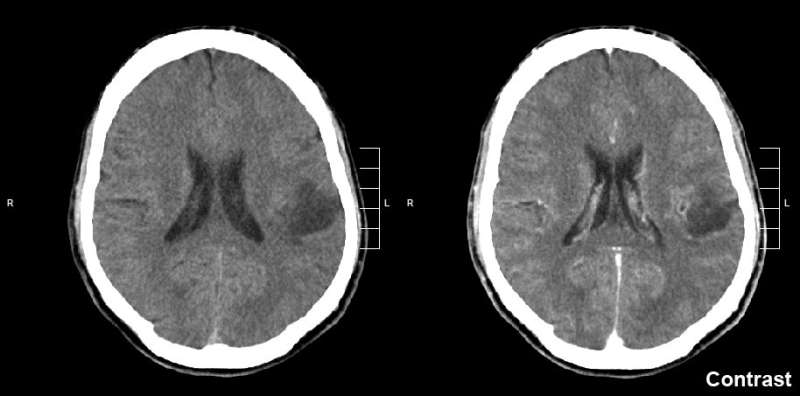This article has been reviewed according to Science X's editorial process and policies. Editors have highlighted the following attributes while ensuring the content's credibility:
fact-checked
peer-reviewed publication
trusted source
proofread
Research team establishes framework for improved imaging diagnostics of brain tumors

Diffuse gliomas are malignant brain tumors and cannot be optimally examined by conventional imaging using MRI. Amino acid PET can better visualize the activity and spread of gliomas. An international research group (RANO Group) led by MedUni Vienna and LMU Munich has now established the first international criteria for standardized imaging of gliomas using amino acid PET. This groundbreaking work has been published in The Lancet Oncology.
Under the joint leadership of oncologist Matthias Preusser from the Medical University of Vienna and nuclear medicine specialist Nathalie Albert from LMU Munich, the RANO group has developed new criteria for assessing the treatment response of diffuse gliomas. Tatjana-Traub Weidinger (Department of Radiology and Nuclear Medicine) and Maximilian Mair (Division of Oncology, Department of Medicine I) from MedUni Vienna are also involved in the work.
Diffuse gliomas are malignant brain tumors that arise from glial cells in the brain. This type of tumor is usually aggressive and difficult to treat. The RANO group has developed criteria that enable the evaluation of treatment success using positron emission tomography (PET). "These PET-based criteria, called PET RANO 1.0, open up new possibilities for the standardized assessment of diffuse gliomas," says Preusser.
Standardized criteria for interpreting PET images for the first time
PET is an imaging technique that uses radioactively labeled substances to measure metabolic processes in the body. Amino acid PET is used in the diagnosis of diffuse gliomas. Its tracer works on a protein basis (amino acids) and accumulates in brain tumors.
Albert explains, "PET imaging with radioactively labeled amino acids has proven to be extremely valuable in neuro-oncology and enables reliable imaging of the activity and extent of gliomas. Amino acid PET has been used for years, but has not yet been evaluated in a structured way. In contrast to MRI-based diagnostics, there were previously no criteria for interpreting these PET images."
"These new criteria will enable researchers and physicians to use PET in clinical trials and clinical routine," adds Preusser, "they are based on expert consensus and create a basis for future studies and the comparison of treatments for improved therapies."
The Response Assessment in Neuro-Oncology (RANO) Working Group is an international, multidisciplinary consortium for the development of new standardized response criteria for clinical trials in brain tumors. It is a group of experts from various disciplines that has been developing standard reference criteria for the assessment of various clinically relevant aspects for more than 10 years.
More information: Nathalie L Albert et al, PET-based response assessment criteria for diffuse gliomas (PET RANO 1.0): a report of the RANO group, The Lancet Oncology (2024). DOI: 10.1016/S1470-2045(23)00525-9




















